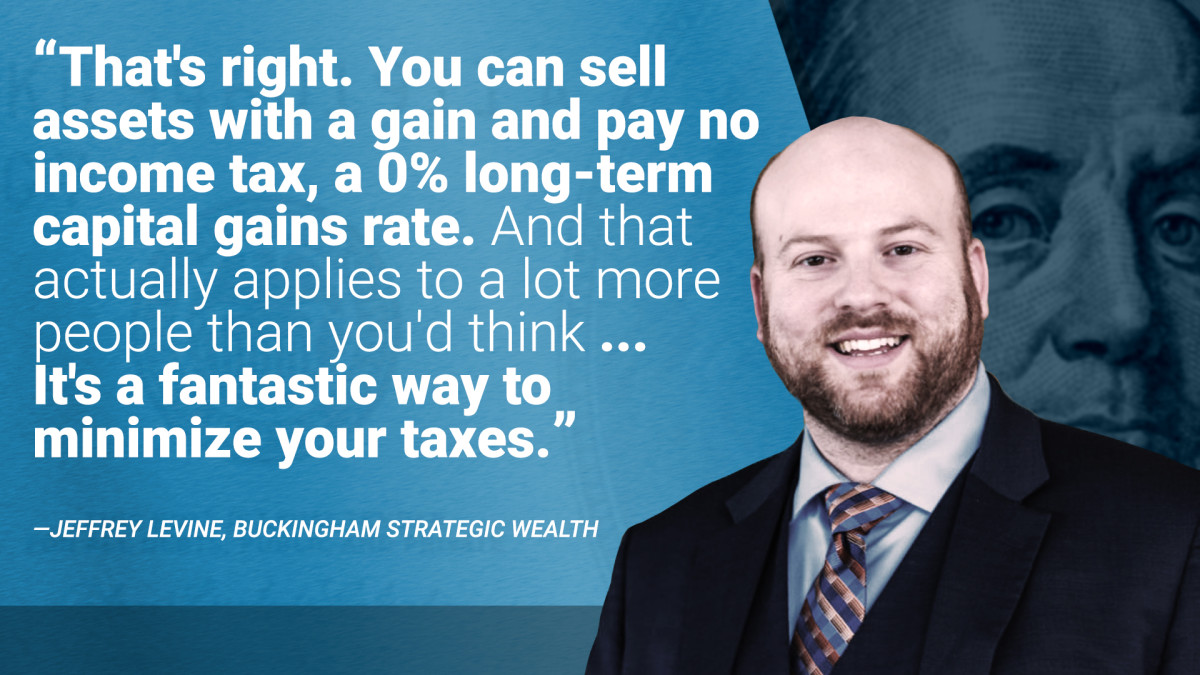Retirement Daily’s Robert Powell caught up with Jeffrey Levine, CPA and tax pro from Buckingham Strategic Wealth Partners to discuss three ways to minimize the tax consequences of rebalancing.
TurboTax Live experts look out for you. Expert help your way: get help as you go, or hand your taxes off. You can talk live to tax experts online for unlimited answers and advice OR, have a dedicated tax expert do your taxes for you, so you can be confident in your tax return. Enjoy up to an additional $20 off when you get started with TurboTax Live.
3 Ways to Minimize Tax Consequences of RebalancingTry to minimize short-term capital gains and aim for long-term capital gainsUtilize the zero-percent long-term capital gains rateOffset capital gains with capital lossesQuotes| 3 Ways to Minimize Tax Consequences of Rebalancing Jeffrey Levine, Chief Planning Officer, Buckingham Strategic Wealth Jeffrey Levine, Chief Planning Officer, Buckingham Strategic WealthVideo Transcript| Jeffrey Levine, CPA and Tax Expert, Buckingham Strategic WealthRobert Powell: What are some ways to minimize the tax consequences of rebalancing? Well, here to talk with me about that is Jeffrey Levine from Buckingham Wealth Partners. Jeffrey, what are some ways that folks can minimize their tax consequences?
Jeffrey Levine: Well, I can think of a number of ways, but I’ll give you three, Bob, that I always like to stick to. The first one is try to minimize short-term capital gains and try to aim for long-term capital gains. So under our tax system today, if you hold an investment for a year or less and sell it at a gain, you’re going to pay ordinary income tax rates. If you sell it after holding it for more than a year, then you get to use long-term capital gains rates, which are favorable. At all income tax brackets, they are lower than the ordinary rate you would otherwise pay. So that’s key number one.
Key number two is utilize the 0% long-term capital gains rate. So today many individuals, especially those in retirement, qualify for a 0% long-term capital gains bracket. If you find yourself in either the 10% or the 12% ordinary income tax bracket, then your long-term capital gains rate is actually 0% That’s right. You can sell assets with a gain and pay no income tax, a 0% long-term capital gains rate. And that actually applies to a lot more people than you’d think. Sometimes people say, well, 0%, that can’t be me. I’ve got $50, $60, $75,000 of income. But a married couple today, after you factor in things like the standard deduction, etc., can still end up having some room in that 0% long-term capital gains rate. It’s a fantastic way to minimize your taxes.
The third and final way would be through offsetting capital gains with capital losses. So one of the ways the tax code allows you to sort of avoid or push off taxes on capital gains is to find a corresponding loss in your portfolio. Now, if you have one from previous years that’s carried forward, that’s great. You already have that to work with. But if not, and you’re looking at a clean slate, so to speak, you can look and see. Maybe you have one investment that’s lost $10,000. You can sell that, and that would allow you to sell another investment that has gained $10,000. And together they offset one another producing a $0 income tax consequence.
Editor’s Note: The opinions expressed in this article are those of the authors. The content was reviewed for tax accuracy by a TurboTax CPA expert.
Zachary Faulds contributed to the writing of this article and produced the video and/or the graphics associated with it.
